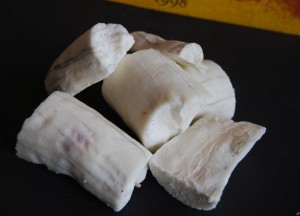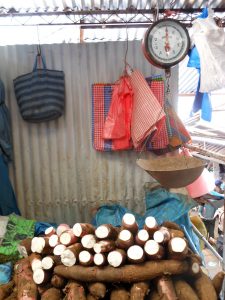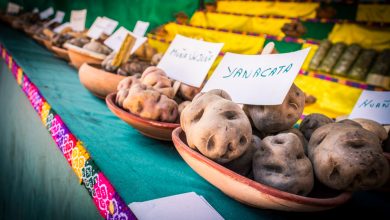Yuca, a Treasured Root from the Jungle

A long brown root that is starkly white inside is one of the most common foods in Cuzco and other areas of South America. Sometimes in English is called cassava and sometimes yuca, after the original in Spanish. From it is made tapioca and it is also the third most consumed food in the world’s tropics, including Peru.
Called in Latin manihot esculenta, it is native to the Americas where there are two varieties, bitter and sweet. The sweet is the one most consumed in the western Amazon, including Cuzco, while the bitter dominates in the east, such as Brazil. In both areas it is an excellent source of carbohydrates.
In Cuzco it grows in the areas of jungle where it is a staple far more important than the potato that owns in the highlands. In areas such as Quillabamna, Qosñipata, Puerto Maldonado, Yanatile and nearby areas almost every house has a plot with yucca growing in it and it is available year round for export to the highlands, such as the city of Cuzco, where it also finds a place.

The plant of the yuca grows to be two meters high in as little as a year from stumps of the root planted in the soil. The stem is longer than the leaves, making the plant look vaguely like a crane, a cluster of leaves on long stalky legs. Since yuca will not withstand frost it only grows in tropical climates and in humid soil with sunlight.
Within a year of planting the yuca is harvested, because if it is let grow the edible parts, the thick upper roots, will toughen until it is no longer edible. Yuca roots can be as much as a meter long and can weigh more than 4 kilos. The peel of the root is very tough and woody and, as a result, is not edible. In addition the pulp of the root is tough before cooking, but one cooked becomes soft and delicious.


There are two kinds of yuca. The white one is characterized by the color of its flesh and for having its barky skin slightly red. The yellow has flesh of that color and its skin is yellowish as well. Both types are tasty and consumed in equal proportions. ‘
In order to be transported the roots are lifted from the ground and placed in bags that weigh roughly 100 pounds, called a quintal. Up to three tons of yuca is loaded on trucks which slowly make their way from the lowlands to all of Peru. They arrive in Cuzco every morning, around 3 or 4 am at the wholesale market Vinocanchón which is the largest market in Cuzco. From their food is distributed to all the other markets of the city to be sold in smaller lots one they open.
The yuca is an important part of the diet of the people of Cuzco, and of Peruvians more generally. It is especially found in broths and soups. The dishes that most commonly include yuca are chicken soup (caldo de gallina), battered yuca (yuca rebosada), stuffed yuca (yuca rellena), head soup (caldo de cabeza), and many more.





